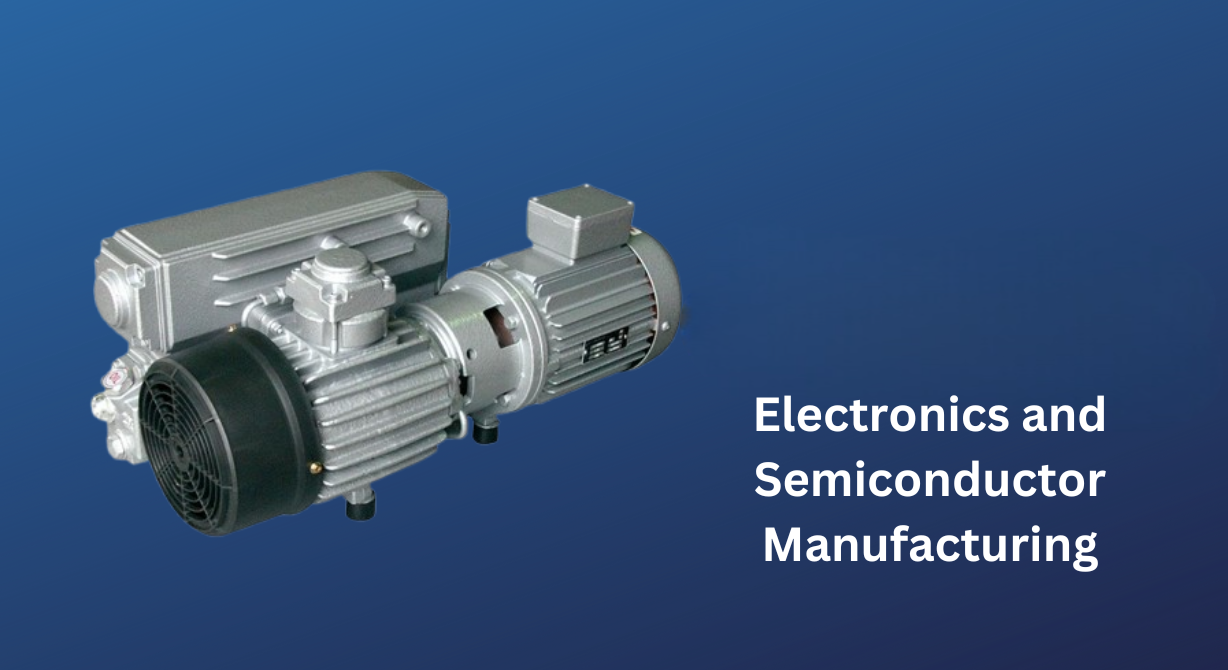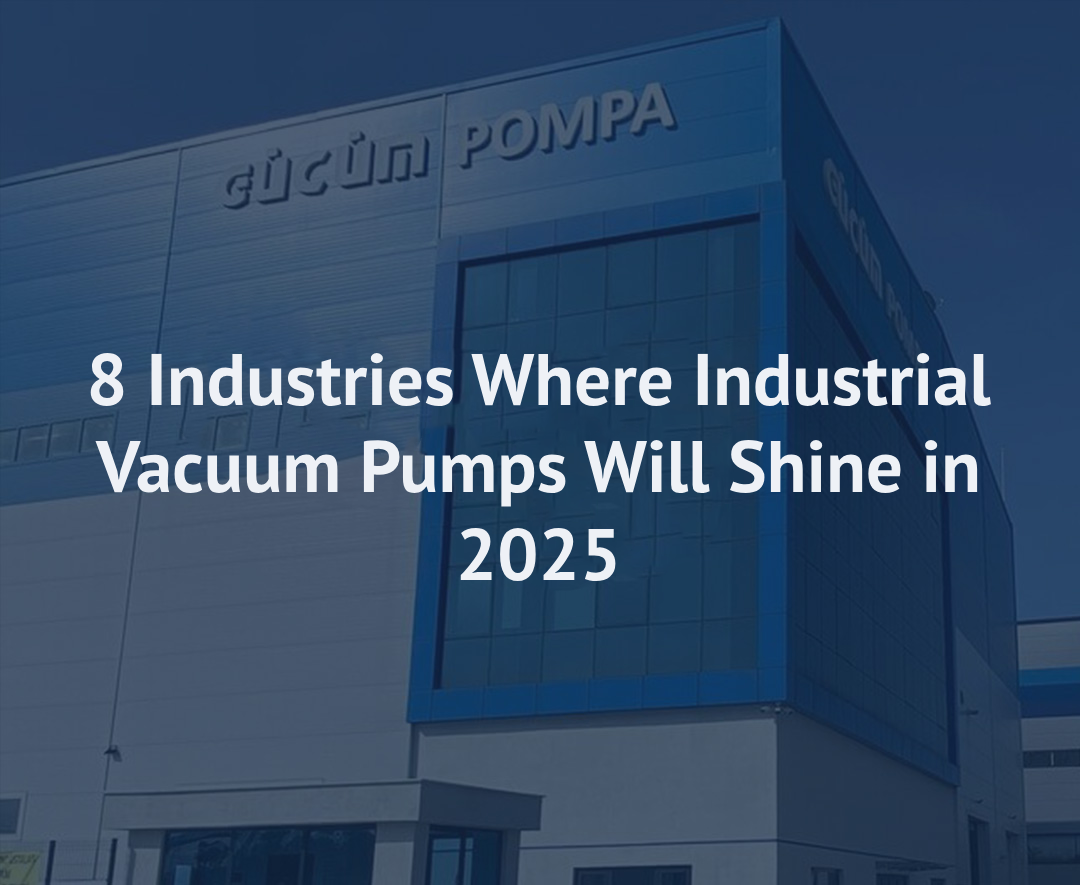8 Industries Where Industrial Vacuum Pumps Will Shine in 2025
Table of Contents
- Food and Beverage Industry
- Pharmaceutical and Healthcare Sector
- Electronics and Semiconductor Manufacturing
- Automotive Industry
- Chemical and Petrochemical Sector
- Energy and Environmental Technologies
- Packaging and Packing Systems
- Aerospace and Space Research
Food and Beverage Industry
Industrial vacuum pumps play a critical role in the food and beverage industry by ensuring product freshness and extending shelf life. Vacuum packaging processes prevent products from coming into contact with air, slowing down spoilage. This vacuum technology is particularly vital for meat, cheese, vegetables, and ready-to-eat foods, maintaining quality while reducing waste. In 2025, the use of energy-efficient and eco-friendly dry vacuum pumps is on the rise in this sector. These pumps eliminate the need for oil, reducing maintenance costs and facilitating compliance with food safety standards. Additionally, vacuum drying and distillation processes are widely used in producing coffee, milk powder, and fruit concentrates. These technologies preserve the natural flavor and nutritional value of products while speeding up production processes.
Pharmaceutical and Healthcare Sector
The pharmaceutical and healthcare sector relies heavily on vacuum pumps due to its need for precision and reliability. These pumps are essential in laboratories and production facilities for creating sterile environments and maintaining the purity of chemical substances. For instance, vacuum drying in drug production ensures active ingredients are processed without degradation. In 2025, the use of oil-free vacuum pumps stands out in this sector, minimizing contamination risks. In hospitals, vacuum-assisted surgical devices and blood collection systems highlight the technology’s daily importance. Furthermore, in biotechnology, vacuum pumps support genetic research and vaccine development by providing controlled environments that enhance experiment accuracy. Innovations in this sector are bolstered by the development of more compact and quieter pumps.

Electronics and Semiconductor Manufacturing
Semiconductor and electronics manufacturing is one of the most intensive users of vacuum technology. Producing microchips and display panels requires ultra-high vacuum environments to eliminate dust and gases completely. In 2025, high-performance rotary vane and screw vacuum pumps remain popular due to their energy efficiency and low maintenance needs. Vacuum coating processes enhance the surface quality of products ranging from smartphones to solar panels. These pumps are also used in precision devices like electron microscopes and laser systems. With eco-conscious manufacturing trends, the use of water-based and dry vacuum pumps is growing, reducing waste management challenges.
Automotive Industry
The automotive sector stands out as a key area where vacuum pumps are extensively utilized in both manufacturing processes and within vehicles themselves. In vehicles, particularly in brake systems and exhaust emission control, vacuum pumps enhance safety and performance. For example, in hydraulic brake systems, vacuum pumps allow drivers to brake with less effort while improving safety standards. In 2025, with the rise of electric vehicles, the demand for compact and lightweight designs in vacuum pumps is growing. In electric vehicles, vacuum pumps optimize energy efficiency in battery cooling systems and cabin climate control units, extending vehicle range.
In production lines, vacuum technology plays an indispensable role across various applications. Plastic injection molding is used to manufacture automotive interior components, such as dashboards and door panels. In this process, vacuum pumps remove air from molds, ensuring flawless material placement and preventing surface bubbles. Similarly, in glass lamination processes, particularly for windshields, vacuum technology enables layers to bond without air bubbles, which is critical for both aesthetics and durability.
Furthermore, vacuum packaging of automotive components is a common method to prevent corrosion during storage and transportation. Metal components, such as engine parts and chassis elements, remain protected from moisture and oxygen when vacuum-sealed, preserving their quality even in long-term storage. In 2025, with the increasing adoption of robotic production lines, vacuum pumps are also used in part handling and assembly processes. For instance, vacuum grippers enable precise movement of delicate components by robotic arms.
In this sector, low-noise and high-suction capacity vacuum pumps enhance both worker comfort and efficiency in factory settings. The shift from traditional oil-based pumps to dry vacuum pumps reduces maintenance needs, supporting uninterrupted production lines. Additionally, aligning with the automotive industry’s sustainability goals, pumps designed to consume less energy and made from eco-friendly materials are gaining traction. For example, in the production of carbon fiber-reinforced composites, vacuum pumps are used in resin transfer molding processes, contributing to the development of lighter, more fuel-efficient vehicles.
Looking ahead, the role of vacuum technology in autonomous vehicle production is set to expand. Manufacturing sensors and lidar systems requires ultra-clean vacuum environments, enhancing product quality and supporting the reliability of autonomous driving technologies. The automotive industry, leveraging the versatile advantages of vacuum pumps, is reaching new heights in innovation and operational excellence in 2025.
Chemical and Petrochemical Sector
The chemical and petrochemical industry employs vacuum pumps in various processes. Vacuum filtration, distillation, and drying are fundamental for purifying chemical substances. In 2025, water ring vacuum pumps stand out in this sector for their high suction capacities and eco-friendly designs. These pumps are used to remove hazardous gases and process dangerous materials safely. For example, in oil refineries, vacuum pumps facilitate the separation of crude oil into different components. They also create low-pressure environments in chemical reactors to enhance reaction efficiency. Pumps made from corrosion-resistant materials ensure long-term durability and reduce maintenance costs in this sector.
Energy and Environmental Technologies
The energy sector uses vacuum pumps in both conventional and renewable energy production. In oil and gas extraction, vacuum pumps enable efficient material extraction from wells. In 2025, vacuum technology plays a critical role in renewable energy, particularly in solar panel production. Vacuum coating processes improve panel energy efficiency. In environmental technologies, vacuum pumps are used in wastewater treatment plants and biogas production, offering high reliability in waste collection and gas processing. The use of eco-friendly dry vacuum pumps reduces carbon footprints, supporting sustainability goals in this sector.
Packaging and Packing Systems
The packaging industry is one of the most common users of vacuum pumps. Vacuum packaging is a standard method for preserving food, pharmaceuticals, and electronics. In 2025, high-speed and energy-efficient vacuum pumps boost production line performance in this sector. For example, vacuum sealing ensures products are airtight, preventing spoilage. Additionally, vacuum technology supports molding processes in the production of plastic bottles and cans. Low-noise and compact pumps provide ergonomic benefits in factory settings, and innovative designs allow seamless integration into various packaging machines.
Aerospace and Space Research
The aerospace and space sector hosts some of the most advanced applications of vacuum technology. In space simulation chambers, vacuum pumps replicate the low-pressure environment of space to test equipment. In 2025, ultra-high vacuum pumps are used in manufacturing telescopes and satellite components. Vacuum coating of aircraft engines and aerodynamic parts enhances durability and performance. These pumps must meet the highest standards of precision and reliability. Eco-conscious designs are also gaining importance, with energy consumption-reducing pumps preferred in large-scale testing facilities.
Industrial vacuum pumps are paving the way for innovation and efficiency across these eight industries in 2025. Each sector leverages the flexibility and performance of this technology to optimize production processes. With advancing technology, more eco-friendly, quiet, and energy-efficient pumps are helping industries meet sustainability goals. These pumps remain the backbone of modern manufacturing and scientific research, retaining their significance into the future.


